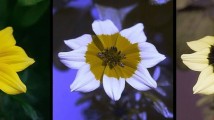Abstract
Relationalism is a view popularized by Cohen according to which the colors are relational properties. Cohen’s view has the unintuitive consequence that the following propositions are false: (i) no object can be more than one determinate or determinable color all over at the same time; (ii) ordinary illusion cases occur whenever the color perceptually represented conflicts, according to (i) above, with the object’s real color; and (iii) the colors we perceive obey (i). I investigate Cohen’s attempt to address these intuitive propositions with which his view struggles and find it to be incompatible with how he motivates his view.
Similar content being viewed by others
Notes
In the past, I have left viewing circumstances out of the formulation of Cohen’s view (Roberts 2014). Adding them further complicates the presentation, but for this article I think it is worth doing so.
Cohen (Cohen 2009, 2007, p. 340) accounts for errors in color perception due to hallucinations and deviant causal chains without having to distinguish between coarse-grained and fine-grained colors. Errors due to deviant causal chains cannot account for Illusion, because this intuition, as I define it, rules out deviant causal chains.
There are two important things to note here. First, Cohen thinks that there are no principled specifications of ‘normal observer’ and ‘normal circumstances.’ Second, it seems there can be different kinds of coarse-grained colors, but for simplicity I am just going to work with coarse-grained colors as I have defined them.
In the passage, I have changed the tomato to being unripe. Cohen says the tomato “is red for Sally in condition C” and that “the tomato’s appearance in C to Sally would be entirely distinct from the very same tomato’s appearance in perceptual circumstances pretty much like those she encounters [.]” So, the tomato must be unripe.
A likely response is to say that only explicit beliefs influence what we perceptually represent. If this response were plausible, Cohen could avoid my argument for Often-Coarse while accepting something like Belief-Dependency. Unfortunately, this response is not at all plausible. The masses seldom explicitly believe anything about their perceptual systems and viewing circumstances. Hence, if the response were correct, few people other than philosophers and color scientists would ever represent the coarse-grained colors. Thus, if the response were correct, ordinary perceptual illusion would at most be confined to intellectuals.
Perhaps Cohen could develop an argument from visual variation, but this has yet to be done. More would have to be said to understand “visual variation.” What exactly is “visual variation” if not perceptual variation? Is there empirical support for it? Can it motivate relationalism while avoiding the kinds of tensions talked about in this article? Is a distinction between visual and perceptual variation conceptually coherent?
References
Byrne, A., & Hilbert, D. R. (2003a). Color realism and color science. Behavioral and Brain Sciences, 26, 3–21.
Byrne, A., & Hilbert, D. R. (2003b). Color realism redux. Behavioral and Brain Sciences, 26, 791–794.
Byrne, A., & Hilbert, D. (2004). Hardin, Tye and color physicalism. Journal of Philosophy, 101, 37–43.
Campbell, J. (1993). A simple view of colour. In J. Haldane & C. Wright (Eds.), Reality, representation and projection. New York: Oxford University Press.
Cohen, J. (2004). Color properties and color ascriptions: a relationalism manifesto. Philosophical Review, 113, 451–506.
Cohen, J. (2006). Colour and perceptual variation revisited: unknown facts, alien modalities, and perfect psychosemantics. Dialectica, 60, 307–319.
Cohen, J. (2007). A relationist guide to error about color perception. Noûs, 41, 335–353.
Cohen, J. (2009). The red and the real. Oxford: Oxford University Press.
Griebel, U., & Peichl, L. (2003). Colour vision in aquatic mammals—facts and open questions. Aquatic Mammals, 29, 18–30.
Hacker, P. M. S. (1991). Appearance and reality. Oxford: Basil Blackwell.
Hardin, C. L. (1988). Color for philosophers. Indianapolis: Hackett.
Jacobs, G. H., & Deegan, J. F., II. (1999). Uniformity of colour vision in old world monkeys. Proceedings of the Royal Society of London B: Biological Sciences, 266, 2023–2028.
Palacios, A., Martinoya, C., Bloch, S., & Varela, F. J. (1990). Color mixing in the pigeon. A psychophysical determination in the longwave spectral range. Vision Research, 30, 587–596.
Roberts, P. (2014). Parsing the rainbow. Synthese, 191, 1793–1811.
Roberts, P., Andow, J., & Schmidtke, K. (2014). Colour relationalism and the real deliverances of introspection. Erkenntnis. doi:10.1007/s10670-014-9600-6.
Tye, M. (2000). Consciousness, color, and content. Cambridge: MIT Press.
Wright, A. A., & Cumming, W. W. (1971). Color naming functions for the pigeon. Journal of the Experimental Analysis of Behavior, 15, 7–17.
Acknowledgments
I would especially like to thank Philip Percival for help on an earlier draft of this article. I would also like to thank Jonathan Tallant, James Andow, and Jon Robson for helpful advice. I presented an earlier draft of this article at the British Postgraduate Philosophy Association Annual Conference in 2012. I would like to thank the association for giving me a chance to present and my audience for their helpful comments.
Author information
Authors and Affiliations
Corresponding author
Rights and permissions
About this article
Cite this article
Roberts, P. Color Relationalism, Ordinary Illusion, and Color Incompatibility. Philosophia 42, 1085–1097 (2014). https://doi.org/10.1007/s11406-014-9548-4
Received:
Revised:
Accepted:
Published:
Issue Date:
DOI: https://doi.org/10.1007/s11406-014-9548-4



